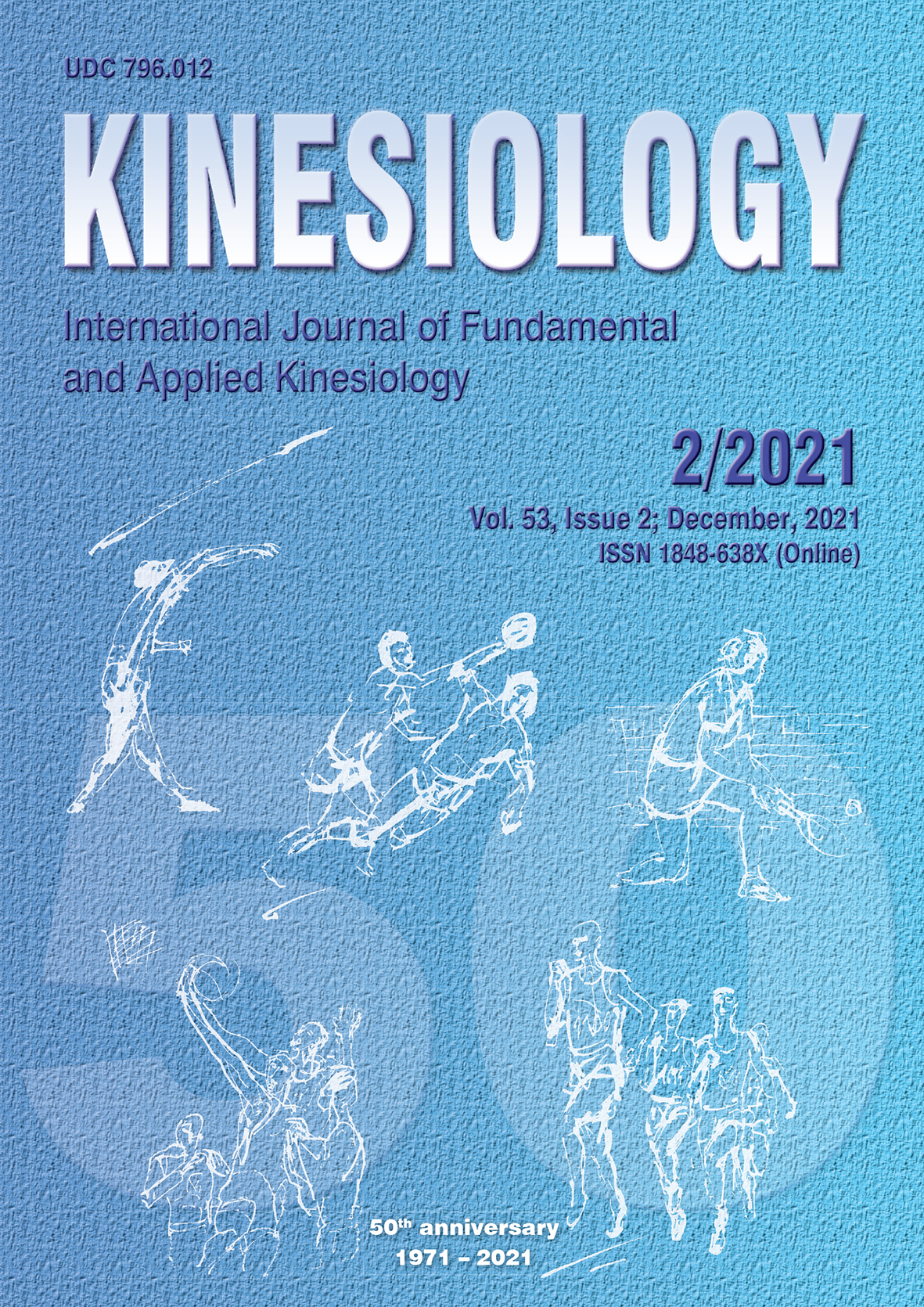CONCURRENT VALIDITY AND RELIABILITY OF THE LOAD-VELOCITY RELATIONSHIP TO PREDICT THE ONE-REPETITION MAXIMUM DURING THREE WEIGHTLIFTING DERIVATIVES
Abstract
The study investigated the concurrent validity and reliability of the load-velocity relationship to predict the one-repetition maximum (1RM) of the power clean from the knee (PCK), high pull from the knee (HPK), and mid-thigh clean pull (MTCP). For each exercise, 12 participants performed two 1RM sessions tests and two sessions to measure the barbell’s load-velocity relationship at 30, 45, 60, 75, and 90% of 1RM. The velocity recorded at each load was used to establish the linear regression equation and, consequently, to predict 1RM value. A low validity between the 1RM direct test and predicted 1RM was observed for PCK (typical error [TE]=3.96 to 4.50 kg, coefficient of variation [CV]=4.68 to 5.27%, effect size [ES]=-0.76 to -0.58, Bland- Altman bias [BAB]=9.83 to 11.19 kg), HPK (TE=4.58 to 5.82 kg, CV=6.44 to 8.14%, ES=-0.40 to -0.39, BAB=3.52 to 4.17 kg), and MTCP (TE=6.33 to 8.08 kg, CV=4.78 to 6.16%, ES=-0.29 to -0.19, BAB=3.98 to 6.17 kg). Adequate reliability was observed for the 1RM direct test and for the predicted 1RM. However, based on Bland-Altman limits of agreement, lower measurement errors were obtained for the 1RM direct test in comparison to the predicted 1RM for all the exercises. In conclusion, the load-velocity relationship was not able to predict 1RM values with high accuracy in the PCK, HPK, and MTCP. Moreover, the 1RM direct test was the most reliable for PCK, HPK and MTCP.
Key words: power clean, maximum strength, velocity-based training, measurement error, linear regression
Downloads
Published
How to Cite
Issue
Section
License

This work is licensed under a Creative Commons Attribution-NonCommercial 4.0 International License.
At Faculty of Kinesiology we recognize that access to quality research is vital to the scientific community and beyond. Kinesiology is non-profit journal and all costs of publishing and peer review process are covered by the publisher itself or other funding sources like Ministry of Science and Education of the Republic of Croatia. Full text papers are also available free of charge at http://hrcak.srce.hr/kineziologija. There are no restrictions on self archiving of any form of paper (preprint, postprint and publisher's version).
Articles are distributed under the terms of the CC BY - NC 4.0
Kinesiology does not charge any fees to authors to submit or publish articles in our journal.


